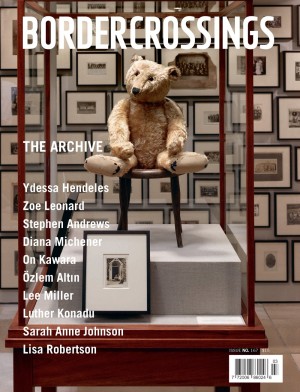Tom Lovatt
This exhibition, “What Are Men For,” offers a plenitude of dynamic images; there are portraits of mixed-martial-arts fighters and there are paintings of prize fighters in the ring. In viewing these latter instances of unique moments in a boxing bout (based on photos from fights), there’s no avoiding the violence depicted or implied. The double entendre of the title, “What Are Men For,” evokes every possible opinion relevant to masculinity these days. The replies women might offer, thinking of what we need from men, would range from the heartfelt to the hilarious; the replies from men quite conceivably would be divided into “Men are for —” and “Men are against —.”
Plenty of men are all for learning Asian martial arts or how to box or how to wrestle Greco-Roman style but not all men. And if not all men, among them is Tom Lovatt, who decided to explore his ambivalence about aggression, claimed by many to be an essential masculine trait. The phrase that is circulating these days is “toxic masculinity,” of which the members of Hamas, and Trump, Netanyahu and Putin are exemplars. “Toxic masculinity” is a social epithet presumably at the far end of a “male traits spectrum.” The entire spectrum, however, is not currently foremost in the public imagination, and two wars are.

Tom Lovatt, Falling Man, 2023, acrylic and black chalk on canvas, 213.36 × 121.92 centimetres. Photo: B Woodland. Courtesy the artist and Mennonite Heritage Centre Gallery, Winnipeg.
As soon as viewers walk into the vaulted expanse of the Canadian Mennonite University Gallery, they behold six massive portraits: two are oil on canvas and four are red conté on sandpaper. Supposedly these are the faces of male professional fighters, yet none of these subtle and idiosyncratic facial expressions connote violence. There are four smaller oil-on-board portraits, each slightly sequestered in their own shallow eye-level alcoves. These display the effect of combat on a fighter’s face, a little blood, obvious bruises, an expression of bewilderment, vigilance or resignation, nothing theatrical. None of these facial expressions suggest a victim or a bully.
Masterful is the best adjective for Tom Lovatt’s four 1.5 × 1.5-metre conté drawings, as are the shadowy acrylic blue scenes of mixed martial arts and of boxing. If reverence for discipline and courage can be evidenced by the breadth and intensity of an artist’s skill, then obviously Lovatt has bestowed his best. A predominantly blue acrylic, for instance, depicts two fighters in an intimate tangle of arms, torsos and legs. A dim bruised-flesh-tinted fog drifts over the scene; at the bottom of this drawing near the bare feet of the dominant fighter, Lovatt has splashed dilute sickly green and morbid purple drips. This splatter of colour is a disruption, and holds the image in the realm of ideas, fantasy and myth, possibly for the combatants and most certainly for the viewer.
The magnificent Falling Man, in blue acrylic on unstretched canvas, depicts a professional boxer the moment he is doubled over by his opponent’s punch. This muscular fellow stays on his feet, maintaining his balance while his body assimilates the shockwaves of the blow. Or was this nimble strongman deliberately crouching, his movement safely dodging his opponent’s fist? Is this posture a moment of intense pain? Or is it a perfectly timed deke? As with all the other drawings of combatants, there is no beginning, middle or end to the narrative of which this is a sliver. If there is a story about a winner and a loser, it is elusive. This instant, like many others, remains inconclusive, almost as a kind of hypothesis: if supposedly men cannot resist doing violence against other men, then courting pain also implies something about masculinity, as does its opposite, defending against pain. All the drawings of this sport evoke so many contrasting hypotheses. The strange brilliance of this exhibit cannot be reduced to valorization of the skill required to bash another human to Kingdom Come.

Tom Lovatt, Boxer, 2023, red chalk on sandpaper, 213.36 × 152.4 centimetres. Photo: B Woodland. Courtesy the artist and MHC Gallery, Winnipeg.
None of the six large portraits are rendered in photo-realistic detail; the texture of complexions is irrelevant here. It is the expressions on their faces that incite interpretation; corporeal accuracy would distract from their subjectivity. For example, one of the acrylic portraits, Len, communicates a unique, obviously fleeting emotion but not the slightest visual cue that the man portrayed takes part in a violent sport. Of course, the viewer has been informed that this fellow is a fighter, but what we see is a man who is perhaps taking a deep breath and who seems maybe a little worried. In fact, he seems to be thinking. Behind him the wall is bursting with golden light; it is as if the central blond clumps of his warm brown beard partake of this blazing brightness. This gleaming visual context symbolizes something intense, perhaps even something transcendental; it is of perplexing significance. Here, the viewer is on their own. Maybe the viewer will recognize what the UFC two-weight-class champion fighter Georges St-Pierre discovered: when face to face with a serious challenge— whether physical or intellectual or both—how you respond will teach you who you are. Artworks, like a good fight, can sometimes set you up the same way. ❚
“What Are Men For” was exhibited at the Mennonite Heritage Centre Gallery, Winnipeg, from December 15, 2023, to January 13, 2024.
Jeanne Randolph is an independent intellectual whose most recent book is My Claustrophobic Happiness (ARP Books, 2020).
To read the rest of Issue 164 on Art & Poetics, subscribe today or order a single copy.

